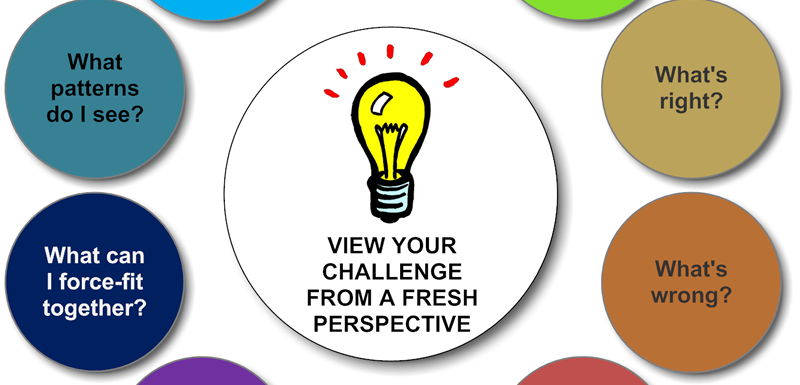One of the challenges we face when we’re trying to solve problems is that we get stuck in a mental rut, using the same habitual mindset. To help us break out of our well-worn thinking patterns, Mark Levy has developed a valuable set of 10 creative questions in his excellent free report, List-Making as a Tool of Thought Leadership (click on the image above to view a larger version that displays all 10 questions).
These questions are:
- What’s obvious?
- What haven’t I noticed before?
- What’s right?
- What’s wrong?
- What’s missing?
- What’s surprising?
- What’s useful?
- What can I force-fit together?
- What patterns do I see?
- What’s this all adding up to?
As you ask these questions about your creative challenge, write down the answers in a notebook or record them in a mind map. In effect, you will be using them as a scalpel to peel back the layers of your problem and view its component parts. I think you’ll be surprised at what you learn and discern by doing so.
One of the principles I talk about in my book, Up Your Impact, is being keenly observant to recognize new opportunities. One of the best ways to do that is to ask creative questions that “whack your thinking.” Your brain loves questions, especially when they stretch your thinking. It will gladly respond and put forth its best ideas. This process of creative questioning will reveal insights that no one else can see, because they come from your unique combination of knowledge, experience and values.
Asking questions like these can be a powerful way for you to differentiate yourself, because few of your peers realize the awesome creative power of questions like this. They will tend to come at the challenge head-on, using their habitual mode of thinking, and attempt to solve it using brute force. Not very effective in this day and age.
One final thought: Don’t limit yourself to Levy’s 10 perspective-expanding questions. Start building your own. How? Look for thought-provoking questions as you read articles and books about creative problem-solving. Make a note of them, and begin to build your own powerful list using your favorite notebook or a software tool like Evernote.

